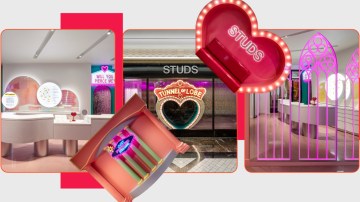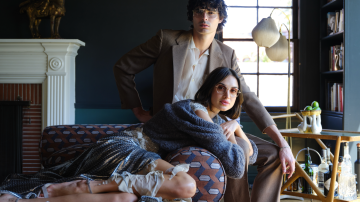For Florida-based dermatologist Dr. Loretta Ciraldo, convincing her patients to apply sunscreen to their faces every day can still be an uphill battle. Asking them to spend $50 on a daily sunscreen can make it even tougher, she admits.
“There’s no doubt that the consumer, at first glance, would be like, ‘Well, why would you spend $50 when you can go to the drug store and buy a sunscreen that you can put on your face for $15?’” said Dr. Ciraldo. Her namesake brand, Dr. Loretta, offers two SPF products: a $50 chemical and physical SPF blend and a $60 mineral sunscreen. Those higher prices come down to their skin-care benefits along with sun protection, she said.
“You’re not getting the anti-wrinkle [benefits with the $15 sunscreen], you’re not getting the hydration, you’re not getting the antioxidants,” said Dr. Ciraldo. “For our line, it’s not only sun protection, but it’s anti-pollution.”
But even a $60 sunscreen is no longer such a tall order to ask of consumers. In April, U Beauty launched a $98 mineral face sunscreen. Augustinus Bader, known for its $300 face cream, launched a $140 mineral sunscreen in March. And it’s not the first sunscreen to pass the $100 mark; Eighth Day skin-care, founded by dermatologist Dr. Antony Nakhla, launched a $140 face sunscreen in 2024.
Those brands have taken what is a utilitarian product intended to be applied liberally and transformed it into a luxury beauty product whose pricing is in line with serums packed with powerful actives and indulgent face creams. According to Grand View Research, the global sun-care market is projected to reach $14 billion by the end of the 2020s.
“Sunscreen used to be this functional last step product. It was thick and chalky and purely about UV protection. But today’s consumer wants more than just that,” said U Beauty CMO and co-founder Katie Borghese.
Borghese said U Beauty’s $98 mineral sunscreen sold out in its first three weeks, boosted in part by new brand ambassador and skin cancer survivor Michelle Monaghan. The sunscreen claims to offer blurred, hydrated skin with on-trend ingredients like vitamin C and hyaluronic acid. That combination of high-performing skin-care ingredients with SPF is something of a novelty in the sun category, Borghese said, and it’s becoming more of the norm. “Perhaps, these higher price points are an indicator that people are investing more in these formulas,” she said.
But justifying a sunscreen that costs as much as a serum means promising as stellar results as a high-priced serum, which can be a challenge in a U.S. market sometimes hampered by strict regulations. Unlike other skin-care products like moisturizers and serums, sunscreens sold in the U.S. are regulated by the FDA.
That can put additional restrictions on how sunscreens are formulated and marketed. Dr. Ciraldo said the FDA requires sunscreen packaging to state that it must be reapplied every two hours. But she advises her patients to use the higher-priced Dr. Loretta SPF products like a daily moisturizer with one application in the morning and to stick to more conventional sunscreens for liberal reapplication when outside in the sun.
“I do absolutely tell my patients, ‘If you’re going for a day at the beach, put on a waterproof sunscreen on your face and reapply it every two hours,’” she said. “I’m the first to put Banana Boat on my body or any of those inexpensive sunscreens when I’m at the beach.”
Borghese said the FDA has been slow to approve new filters. But current regulations make it hard to talk about what is already in U Beauty’s sunscreen.
“The PA ++++, which is the absolute highest rating for UVA protection, is something we can talk about in Europe. And if you look at our U.S. website, we don’t talk about it,” she said. The FDA does not regulate PA ratings, which refer to protection from UVA rays.
U.S. sunscreens are also facing more competition from abroad. K-beauty brand Beauty of Joseon’s sunscreen has gone viral among American TikTok users, while Australian brands like Ultra Violette are arriving stateside. In June, New Zealand skin-care brand Emma Lewisham will launch its mineral face sunscreen in the U.S., where it will retail for $60.
But even with ultra-luxe brands like Augustinus Bader entering the SPF category, cheap sunscreens aren’t going away. The Ordinary, known for its affordable and simplified takes on high-priced skin-care ingredients like vitamin C, launched a serum SPF in May. The two-ounce bottle promises hydration and SPF 45 for just $19.




